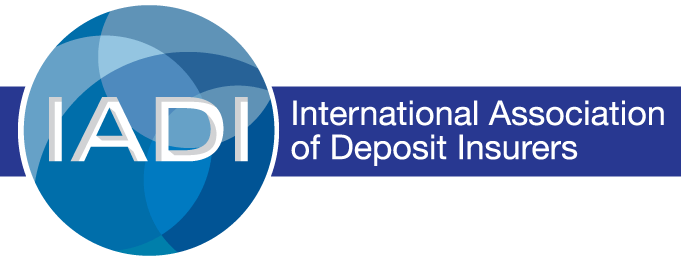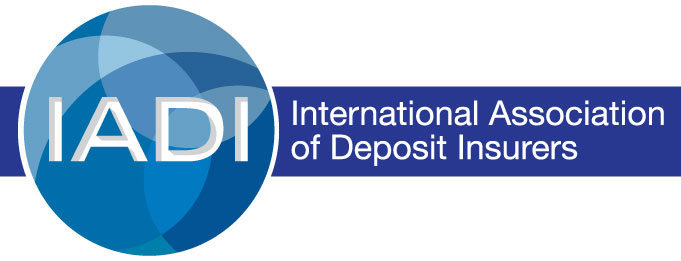"Collaborative Solutions: Enhancing Coordination in Financial Safety Nets"
Keynote by Eva Hüpkes, IADI Secretary General, during the conference “Emerging Challenges for Deposit Insurance Systems and Policy Implications”, a joint event organized by the International Association of Deposit Insurers (IADI) and The South East Asian Central Banks (SEACEN) Research and Training Centre on 7 November 2024, in Kuala Lumpur, Malaysia.
Very good morning to all!
It is an honour to be here and welcome you, also on behalf of our President and Chair of the Executive Council Alejandro Lopez, to the first joint conference between the South East Asian Central Banks Research and Training Centre (SEACEN) and the International Association of Deposit Insurers (IADI) to discuss critical issues that impact the stability and confidence in our financial systems.
Thank you very much to Dr. Cynyoung Park, Executive Director, and her staff of SEACEN, for agreeing so enthusiastically to organise this joint event.
You may wonder why the international standard-setter for deposit insurance and a grouping of regional central banks would hold a joint conference. I think the rationale is evident. Both SEACEN and IADI aim to improve financial stability in their respective member jurisdictions. Whereas SEACEN focuses on capacity building for central banks and promotes collaboration amongst central banks, IADI focuses on the establishment of effective deposit insurance systems and works to build capacity and foster collaboration among deposit insurers and other financial safety-net participants.
Both central banks and deposit insurers are crucial components of the financial safety net. The effectiveness of deposit insurance systems and the broader financial safety net relies on the seamless coordination of the various safety net functions, including prudential regulation and supervision, resolution, the lender of last resort, and deposit insurance. Ultimately, the effectiveness of a financial safety net depends on how well these various functions and entities work together to achieve their common goal of financial stability. The institutional architectures for financial safety nets and the respective mandates of the authorities forming part of the financial safety net vary across jurisdictions as they reflect each jurisdiction’s unique legal, economic, and historical context.
Institutional arrangements for financial safety nets
In some jurisdictions, all the functions of supervision, deposit insurance, resolution, and lender of last resort are housed within the central bank. Across the globe and as of 2023, 18% of deposit insurers are government legislated and administered by central banks, and 10% are integrated into their jurisdiction’s central bank. In many other jurisdictions, those safety net functions are distributed across multiple specialised agencies.
Let me provide some examples:
- In the United Kingdom, the central bank, the Bank of England (BoE), is responsible for the supervision of banks and insurers, through the Prudential Regulation Authority (PRA), which is a part of the BoE. The BoE is also the resolution authority, whereas the deposit insurance function is managed by a separate entity, the Financial Services Compensation Scheme (FSCS).
- In India, the Reserve Bank of India (RBI) serves as the central bank and is mandated to supervise and resolve failing banks. The RBI also operates the deposit insurance system through a wholly owned subsidiary, the Deposit Insurance and Credit Guarantee Corporation (DICGC).
- In the Netherlands, De Nederlandsche Bank (DNB) integrates several safety net functions. It is a member of the Eurosystem of central banks and acts as the prudential supervisor of smaller banks (so-called “less significant institutions”) and as resolution authority, together with the EU’s Single Resolution Board within the context of the EU Banking Union. DNB also operates the deposit insurance fund.
- In Australia, the Australian Prudential Regulation Authority (APRA) is the main regulatory body overseeing banks, distinct from the Reserve Bank of Australia (RBA). APRA also acts as the resolution authority and administers the deposit insurance fund.
- In the United States, the resolution authority and deposit insurer are separate from the central bank. The Federal Deposit Insurance Corporation (FDIC) serves not only as the resolution authority and deposit insurer for all insured depository institutions but also as prudential supervisor for a subset of banks (savings institutions and State-chartered banks that are not members of the Federal Reserve System).
- In Canada, the Canada Deposit Insurance Corporation (CDIC) is an independent agency distinct from the central bank that acts as the resolution authority and provides deposit insurance. Banks are supervised by the Office of the Superintendent of Financial Institutions.
- In South Korea, the Korea Deposit Insurance Corporation (KDIC) functions as both deposit insurer and resolution authority.
- In Malaysia likewise, the Perbadanan Insurans Deposit Malaysia (PIDM) functions as both deposit insurer and resolution authority.
- In Japan, the Deposit Insurance Corporation of Japan (DICJ) is an independent entity providing deposit insurance and operating separately from the central bank and the supervisory authority.
- In many other jurisdictions, deposit insurers are independent entities that are separate from the central bank, supervision, and resolution functions.
These examples illustrate the diversity of institutional arrangements across different jurisdictions. Each jurisdiction tailors its financial safety net architecture to best fit its specific needs, ensuring the stability and protection of its financial system and depositors. In all jurisdictions, regardless of the institutional arrangements, the central bank has an interest in the effectiveness of deposit insurance.
Financial safety net cooperation
To be effective, deposit insurance must work in synergy with prudential regulation, supervision, resolution, and the lender of last resort and public backstop functions. A cohesive and effective deposit insurance system requires an understanding of the mutual interdependencies amongst these elements of the wider financial safety net. It needs to be underpinned by explicit agreements that support and promote cooperation, coordination, and information sharing among financial safety-net participants during both normal times and times of crisis.
Last year’s banking turmoil highlighted the critical importance of a well-functioning financial safety net. As several “lessons learned” publications by authorities involved, as well as international bodies like the Financial Stability Board (FSB) and IADI pointed out, the design of prudential regulation as well as supervisory practices may have a significant impact on options available to effective bank resolution and protection of depositors and financial stability.
The recent turmoil has shown that bank runs can occur faster than authorities anticipate and that liquidity needs could be massive. To ensure continuous access by depositors to their money in times of stress, banks may need to rely on the temporary provision of liquidity by the central bank as lender of last resort, generally referred to as emergency liquidity assistance (ELA). Central bank facilities are generally limited to lending against adequate, eligible collateral. However, a distressed or failing bank’s liquidity needs may exceed the value of its available collateral.
The FSB Key Attributes of Effective Resolution Regimes provide (6.3) that “[j]urisdictions should have in place privately financed deposit insurance or resolution funds, or a funding mechanism with ex post recovery from the industry of the costs of providing temporary financing to facilitate the resolution of the firm.” The Key Attributes go on to state that “any provision by the authorities of temporary funding should be subject to strict conditions that minimise the risk of moral hazard.
How should such funding arrangements be designed and how do they interact with the central bank’s lender of last resort functions? On what terms and under what conditions should resolution funding be provided? How is the transition from central bank funding to resolution funding managed? What is the hierarchy of claims between the different providers of liquidity/funding in the financial safety net? Given that both deposit insurance and resolution funds are limited, what backstop arrangements are available? How is moral hazard mitigated? What is the process for ex post recovery of backstop funding provided?
The recent banking turmoil highlighted the importance and need for effective backstop arrangements. Even where deposit insurance and resolution funds are well-funded, a robust backstop arrangement is essential as an additional line of defence to enhance their effectiveness and credibility.
The ongoing review of the Core Principles for Effective Deposit Insurance Systems, which are the global minimum standard for deposit insurance systems, has identified the need for public backup funding arrangements as critical to reinforcing the effectiveness and credibility of the deposit insurance system and the broader financial safety net.
IADI plans to launch a public consultation on the revised Core Principles early next year. I encourage you to take advantage of the opportunity to provide feedback to IADI. Given that the Core Principles are a global standard, IADI is keen to hear from a broad range of stakeholders. After carefully reviewing all the comments received, we plan to finalise the Core Principles by the end of 2025.
Conclusion
This IADI-SEACEN Conference provides a valuable forum for deposit insurers and central banks in the Asia-Pacific region to discuss these and other important policy issues of interest to both central banks and deposit insurers. It is through such collaborative platforms that we can work together to enhance the resilience of our financial systems.
I look forward to our fruitful discussions during the conference.
I would like to thank Jeremy Edelstein, Hero Seng, and Bert van Roosebeke for their helpful comments.
References
Financial Stability Board (2024) Key Attributes of Effective Resolution Regimes for Financial Institutions (revised version 2024) – Financial Stability Board
Financial Stability Board (2023) 2023 Bank Failures: Preliminary lessons learnt for resolution
Financial Stability Board (2024), Depositor Behaviour and Interest Rate and Liquidity Risks in the Financial System: Lessons from the March 2023 banking turmoil, 23 October 2024.
Financial Stability Board (2016) Guiding principles on the temporary funding needed to support the orderly resolution of a global systemically important bank (“G-SIB”) – Financial Stability Board
International Association of Deposit Insurers (2024) Deposit insurance in 2024: Global trends and key issues
International Association of Deposit Insurers (2023) The 2023 banking turmoil and deposit insurance systems
International Association of Deposit Insurers (2014) IADI Core Principles for Effective Deposit Insurance Systems

